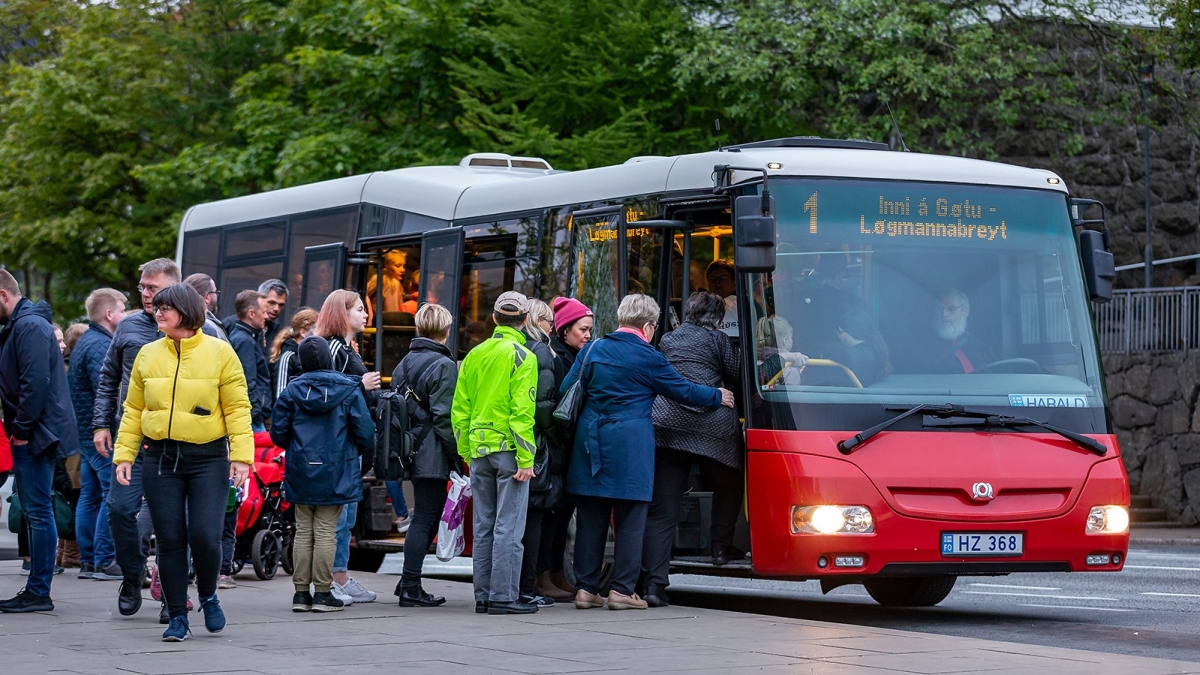Population
11. Sep 2023
Population surpasses 54,700

The Faroese population continues to grow. The annual growth rate now stands at 1.2% after a few months at 1.1%. A significant change has taken place in the population distribution by citizenship status: whereas Danish citizens used to represent most of the population growth, most new residents are now non-Danish citizens.
[px-graph-3]
The population trend is determined by net migration, i.e. the difference between the number of immigrants and the number of emigrants, and the excess of live births over deaths. The population growth in the past year comes from an excess of births of 197 people and a net migration figure of 444 people. The table below shows a slight increase in the excess of births and a slight decrease in net migration, compared with the previous 12-month period.
No change in net migration
The trends in the graph below indicate little change in the difference between immigration and emigration in recent months. The immigration trend declined somewhat last autumn. It has been stable since then, as has the emigration trend. This has resulted in a steady net migration.
[px-graph-3]
Increasing excess of births
The trends in the graph below indicate an increasing difference in the number of live births and deaths in recent months. This slow increase comes in the wake of last year’s big decline in the excess of births, caused by fewer births and unusually high death rates. The birth rate has dropped slowly in the past months, but the death rate has dropped even more, resulting in a slight increase in the excess of live births over deaths.
[px-graph-4]
Non-Danish citizens account for population growth
Danish citizens no longer play as big a part in the population growth as they used to. The number of people with non-Danish citizenship has been on a sharp rise in recent years. A full 86% of new residents in the Faroes over the past two years are non-Danish citizens. This change is clearly visible in the graph below.
[px-graph-5]
Highest growth in the largest municipalities
Out of the 29 municipalities, Tórshavn, Runavík and Klaksvík municipalities had the highest population growth, followed by Nes and Sjóvar municipalities. The towns or cities with the largest growth were Tórshavn, Klaksvík, Saltangará and Strendur. Some towns are reaching all-time high figures month after month. For example, the populations of Toftir and Strendur have surpassed 1,000 for the first time, while Syðrugøta has gone beyond 500 for the first time. The table below shows the population across the 29 municipalities, with details for each town and village on 1 August 2022 and 1 August 2023.
[px-graph-4]
Population figures have a one-month lag
The figures have a one-month lag due to delays in registrations, especially regarding address changes, where many registrations are made after the month of address change has ended. To accommodate as many corrections as possible, there is a one-month lag in the data.
About the population figures
The population is defined as all individuals registered in the national register as residents of the Faroe Islands. Population data includes date of birth, gender, place of birth, citizenship, relationship status, and, where applicable, information on immigration and emigration, domestically as well as between the Faroe Islands and other nations.
About the trend
The trend describes the population trend by adjusting for seasonal effects and other error components in the population figure.